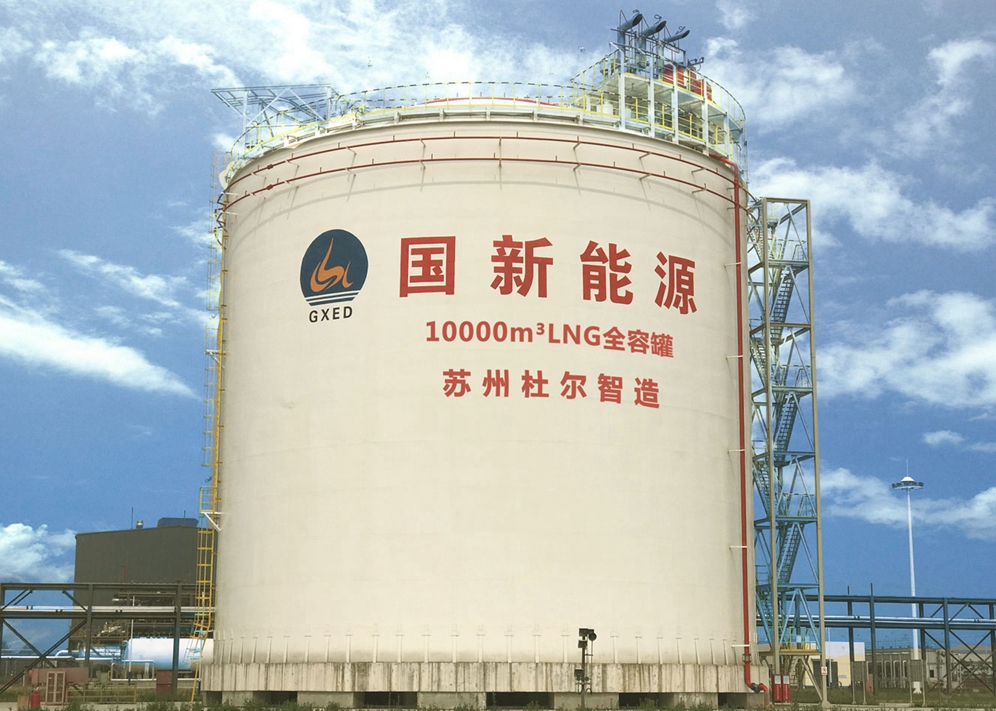Hotline
+86 512-81666096118,Calculation of maximum discharge capacity (bog) under tank fire and rollover conditions (I) - Doer equipment
Classification:Forum PublishTime:2019-11-16 13:58:50
Calculation of maximum discharge capacity (bog) under tank fire and tumbling conditions
Determination of discharge capacity
1、 According to the specification en1473-2007, the gas volume generated under the following conditions shall be considered for the discharge capacity of the pressure relief device of LNG storage tank;
1. Gasification caused by heat input
2. Exhaust caused by filling
3. Flash caused by filling
4. Change of atmospheric pressure
5. Recirculation caused by submersible pump
6. Control valve failure
7. Tumbling
8. Fire
During normal operation of LNG low temperature and atmospheric pressure storage tank, the first six situations causing overpressure of the storage tank may occur, which can also be used as the design basis for the maximum throughput of the regulating valve of bog gas to flare system or compressor recovery system.
Tumbling is an extreme working condition. Under atmospheric pressure, the boiling point of LNG is - 161 ℃, which is very easy to gasify, and the gasification ratio is about 1:600. When LNG with different density is stratified in the storage tank, it will quickly turn up and down, mix and gasify in a large amount instantly. Fire and rollover are abnormal working conditions and should not occur at the same time. Therefore, when calculating the discharge capacity, only external fire or rollover shall be considered. Compare the bog amount under the two working conditions and take the greater of the two.
2、 External fire conditions
According to the provisions of GB / t20368-2006, the calculation formula of discharge capacity is
H=71000 × F × A 0.82 +H n
Where:
H: Total heat flow, w
F: Environmental factors
A: Wet surface area of tank in contact with flame, ㎡
H N: normal heat leakage of cold tank, w
For large tanks, the surface area in contact with the flame shall be from 9.15 meters (30 ft) above the ground.
Tank body: 1
Water facilities: 1
Pressure drop and emptying facilities: 1
Underground storage tank: 0
Thermal insulation or thermal protection f = u (904 TT) / 71000
Note: u is the total heat transfer coefficient w / (m · K) of the insulation system, using the average value in the temperature range from TT to 904 ℃; TT is the medium temperature in the container under venting conditions. For LNG storage tank, take - 165;
For pearlite insulation material, the thickness of insulation layer is 1000mm and the insulation coefficient is 0.022w / (m · K);
Calculate the total adiabatic heat transfer coefficient u = 0.022 / 1 = 0.022 (Doer to the thin thickness of the steel plate, the heat transfer coefficient of the steel plate can be ignored in the calculation of the total adiabatic coefficient),
Then f = 0.022 ×( 904+165)/71000=0.000275

News
- 216、Advantages of Double Metal Full Capacity Tank … [2023-05-09]
- 215、Design principles for low-temperature storage … [2023-05-09]
- 214、Low temperature storage tank safety education … [2023-05-09]
- 213、Objectives of project construction management-… [2023-05-09]
- 212、Quality service advantages of Doer large low-t… [2023-05-09]
- 211、Advantages of Doer Large Low Temperature Stora… [2023-05-09]
- 216、Design scope of atmospheric and low-temperatur… [2023-05-08]
- 215、Process flow of low-temperature LNG storage ta… [2023-05-08]
- 214、Testing methods for low-temperature argon stor… [2023-05-08]
- 213、Performance Description of Low Temperature Eth… [2023-05-08]






